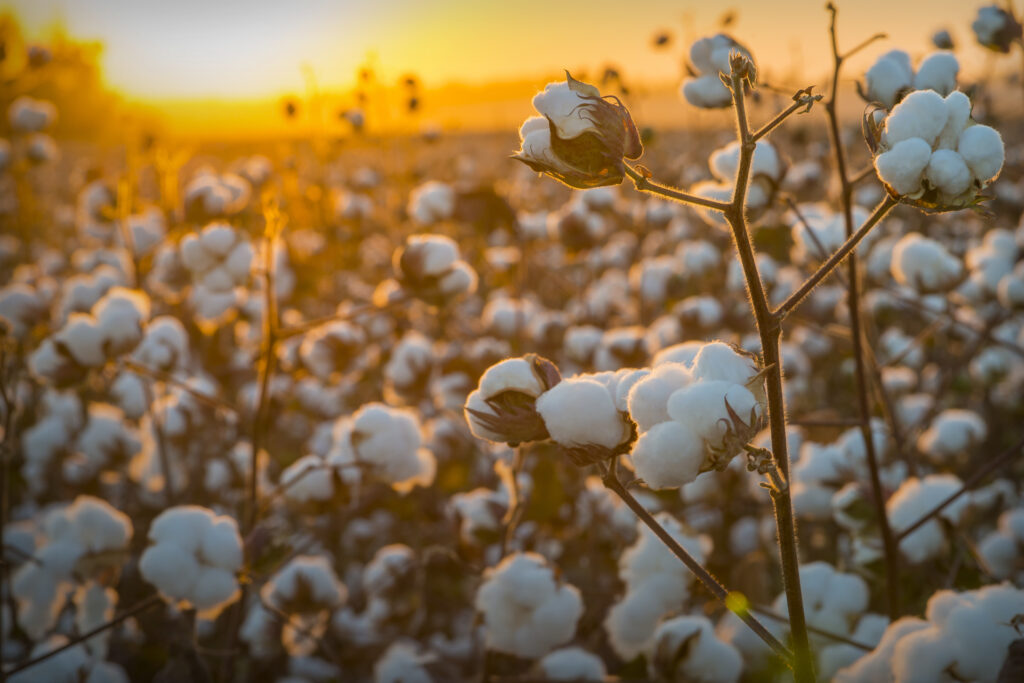All you need to know about BCI cotton and how it works

We get a lot of questions from customers asking how much product from Better Cotton they get in their fabric when purchasing a textile with the BCI label on it. In this article we outline all the information you need, so you have a better understanding of how the programme really works, and how much of it you get in your product (if any).
Let’s start talking about cotton, the world’s most widely used textile fibre for its comfort, convenience and relatively low cost. As reported by Bloomberg, “more than 26 million tons is plucked from shrubs annually and spun into yarn. That’s enough to provide at least two dozen T-shirts for everyone on the planet.” But growing cotton can be quite damaging to the environment as it often requires vast amounts of water and pesticides, with labour practices for the product recently coming under fire.
What is Better Cotton?
Formed in 2005 and with more than 2,100 members, Better Cotton – formerly known as Better Cotton Initiative- is the largest cotton sustainability programme in the world. Stakeholders include farmers, ginners, spinners, suppliers, manufacturers, brand owners, retailers, civil society organisations, donors and governments. The programme aims to train farming communities to produce cotton in better ways for the environment and people.
BCI’s production represents almost a quarter of global cotton output. 2.4 million farmers are licensed to sell cotton certified by the organisation, which is funded through membership dues and a levy on sales.
How does it work?

BCI uses a Mass Balance system, where Better Cotton can be mixed with other types of cotton on its journey through the supply chain. This means the final product may not contain any BCI cotton, but the Better Cotton licensed farmers always know their cotton is in demand. Through this programme companies contribute in ‘credits’ to BCI in equivalent volumes to the products sourced, allowing BCI to support all licensed farmers directly with training and monitoring, so they get this benefit no matter where their Better Cotton ends up.
BCI, which promotes cotton grown with less water, fewer pesticides and higher yields for farmers, compares the process to buying renewable energy. “If you purchase renewable energy credits, a power line is not run from, say, a wind farm directly to your house. Rather, the credits are proof that a certain amount of renewable energy has been added to the existing power grid. This energy might not be powering the lights in your house, but nonetheless, your purchase ensures that greener energy is added to and pulled from the power grid.”
To avoid ‘not so responsibly sourced’ cotton making its way through the supply chain, BCI has said its working to create a new system that will offer full physical traceability of Better Cotton by 2022.
What are the Better Cotton credits or BCCUs?
As Better Cotton explains, each kilo of BCI is allocated one credit called a ‘Better Cotton Claim Unit’ or BCCU.
To understand exactly how BCCUs work, watch this video by Better Cotton:
See the above video
To summarise, when you are procuring, for example, a Carrington Textiles fabric with BCI cotton, it means that your purchase is supporting the production of more responsible cotton rather than getting a specific amount (if any) of this cotton in the fabrics’ composition. This support is distributed equally by the Better Cotton Initiative between all the licensed farmers, irrespective of the amount of their product that ends up in your fabric’s blend.
